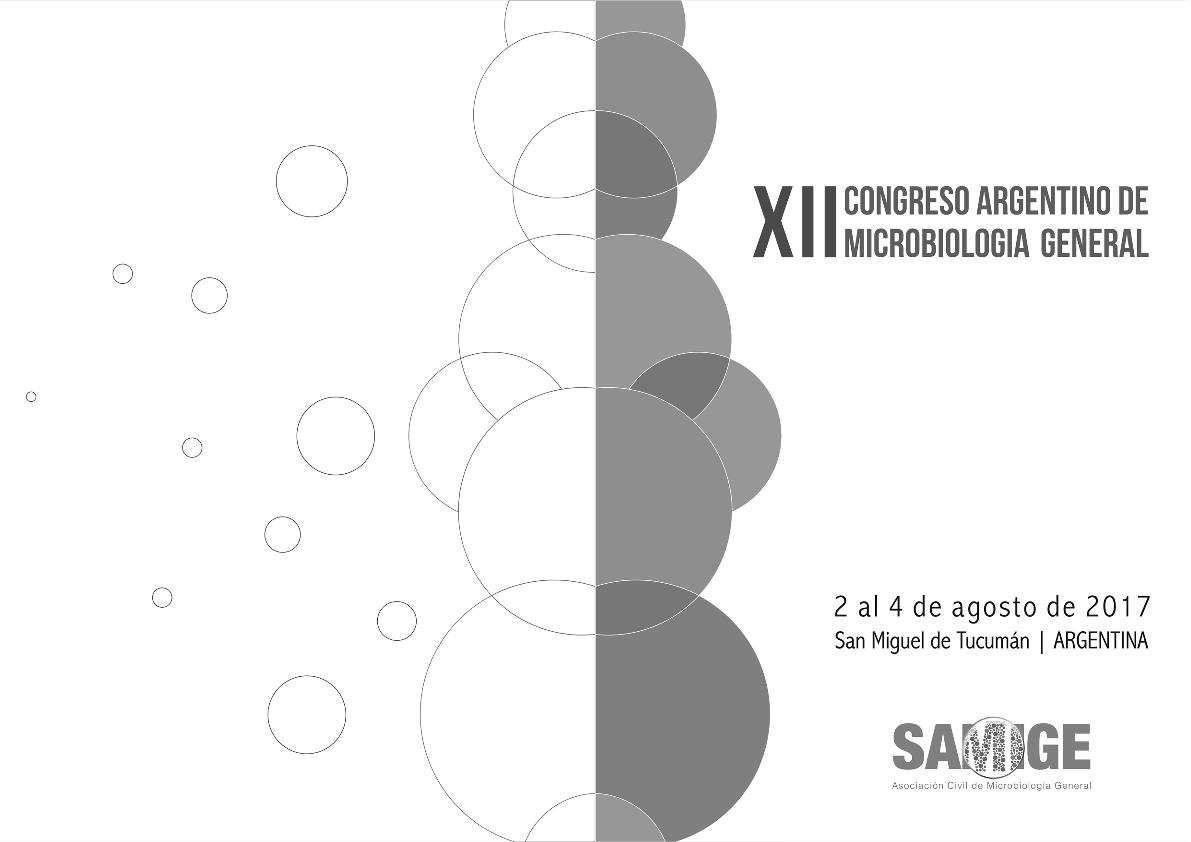Mostrar el registro sencillo del ítem
dc.contributor.author
Kurth, Daniel German

dc.contributor.author
Rasuk, Maria Cecilia

dc.contributor.author
Visscher, Pieter T.
dc.contributor.author
Poire, Daniel Gustavo

dc.contributor.author
Contreras, Manuel
dc.contributor.author
Farias, Maria Eugenia

dc.date.available
2023-02-17T13:29:59Z
dc.date.issued
2017
dc.identifier.citation
Metagenomic analysis of microbial mats from Brava and Tebenquiche lakes; XII Congreso Argentino de Microbiología General; San Miguel de Tucumán; Argentina; 2017; 1-2
dc.identifier.uri
http://hdl.handle.net/11336/188362
dc.description.abstract
In this work, nucleic acid-based molecular methods, geochemical measurements andphysico-chemical characteristics were combined to investigate microbial sedimentary ecosystems ofLaguna Tebenquiche and Laguna Brava. Molecular diversity of two hypersaline microbial mats wascompared by WGS sequencing of environmental DNA from the mats.Brava and Tebenquiche are lakes in the Salar de Atacama, Chile, where microbial communities aregrowing in extreme conditions, including high salinity, high solar insolation, and high levels of metalssuch as lithium, arsenic, magnesium, and calcium. Evaporation creates hypersaline conditions inthese lakes and mineral precipitation is a characteristic geomicrobiological feature of these benthicecosystems. Microsensor measurements on the mats allowed determination of depth profiles of O2and sulfide, showing active production and respiration.The mat from Brava was more rich and diverse, with a higher number of different taxa and withspecies more evenly distributed. At the phylum level, Proteobacteria, Cyanobacteria, Chloroflexi,Bacteroidetes and Firmicutes were the most abundant, including ~75% of total sequences. At thegenus level, the most abundant sequences were affilitated to anoxygenic phototropic bacteria from thegenera Roseoflexus, Chloroflexus and Oscillochloris, followed by cyanobacterial genera such asMicrocoleus, Cyanothece and Nostoc. In Tebenquiche mats, Proteobacteria and Bacteroidetescovered ~70% of the sequences, with Cyanobacteria and Firmicutes including 5% each. Over 13% ofthe sequences were affiliated to Salinibacter genus, thus addressing the lower diversity. OtherBacteroidetes genera with more than 1% abundance included Rhodothermus and Bacteroides. Finally, the Alphaproteobacteria Rhodospirillum was also important.In spite of the differences at the taxonomic level, functionally the two mats were similar. Thus, similarroles could be fulfilled by different organisms. For example, primary production, performed mainly byphotosynthetic organisms from the phyla Cyanobacteria and Chloroflexi in Brava, is performed bymembers of Alphaproteobacteria in Tebenquiche.Further comparison with other microbial mats will allow identifying unique genes from theseenvironments related to their extreme characteristics.
dc.format
application/pdf
dc.language.iso
eng
dc.publisher
Asociación Civil de Microbiología General
dc.rights
info:eu-repo/semantics/openAccess
dc.rights.uri
https://creativecommons.org/licenses/by-nc-sa/2.5/ar/
dc.subject
MICROBIAL MATS
dc.subject
HYPERSALINE LAKES
dc.subject
SEQUENCING
dc.subject
METAGENOMICS
dc.subject.classification
Biología Celular, Microbiología

dc.subject.classification
Ciencias Biológicas

dc.subject.classification
CIENCIAS NATURALES Y EXACTAS

dc.title
Metagenomic analysis of microbial mats from Brava and Tebenquiche lakes
dc.type
info:eu-repo/semantics/publishedVersion
dc.type
info:eu-repo/semantics/conferenceObject
dc.type
info:ar-repo/semantics/documento de conferencia
dc.date.updated
2023-02-10T17:53:42Z
dc.journal.pagination
1-2
dc.journal.pais
Argentina

dc.journal.ciudad
San Miguel de Tucumán
dc.description.fil
Fil: Kurth, Daniel German. Consejo Nacional de Investigaciones Científicas y Técnicas. Centro Científico Tecnológico Conicet - Tucumán. Planta Piloto de Procesos Industriales Microbiológicos; Argentina
dc.description.fil
Fil: Rasuk, Maria Cecilia. Consejo Nacional de Investigaciones Científicas y Técnicas. Centro Científico Tecnológico Conicet - Tucumán. Planta Piloto de Procesos Industriales Microbiológicos; Argentina
dc.description.fil
Fil: Visscher, Pieter T.. University of New South Wales; Australia
dc.description.fil
Fil: Poire, Daniel Gustavo. Consejo Nacional de Investigaciones Científicas y Técnicas. Centro Científico Tecnológico Conicet - La Plata. Centro de Investigaciones Geológicas. Universidad Nacional de La Plata. Facultad de Ciencias Naturales y Museo. Centro de Investigaciones Geológicas; Argentina
dc.description.fil
Fil: Contreras, Manuel. No especifíca;
dc.description.fil
Fil: Farias, Maria Eugenia. Consejo Nacional de Investigaciones Científicas y Técnicas. Centro Científico Tecnológico Conicet - Tucumán. Planta Piloto de Procesos Industriales Microbiológicos; Argentina
dc.relation.alternativeid
info:eu-repo/semantics/altIdentifier/url/http://www.samige.org.ar/admin/news/files/108-Libro%20SAMIGE%202017.pdf
dc.conicet.rol
Autor

dc.conicet.rol
Autor

dc.conicet.rol
Autor

dc.conicet.rol
Autor

dc.conicet.rol
Autor

dc.conicet.rol
Autor

dc.coverage
Nacional
dc.type.subtype
Congreso
dc.description.nombreEvento
XII Congreso Argentino de Microbiología General
dc.date.evento
2017-08-02
dc.description.ciudadEvento
San Miguel de Tucumán
dc.description.paisEvento
Argentina

dc.type.publicacion
Book
dc.description.institucionOrganizadora
Asociación Civil de Microbiología General
dc.source.libro
XII Congreso Argentino de Micorbiología General
dc.date.eventoHasta
2017-08-04
dc.type
Congreso
Archivos asociados
